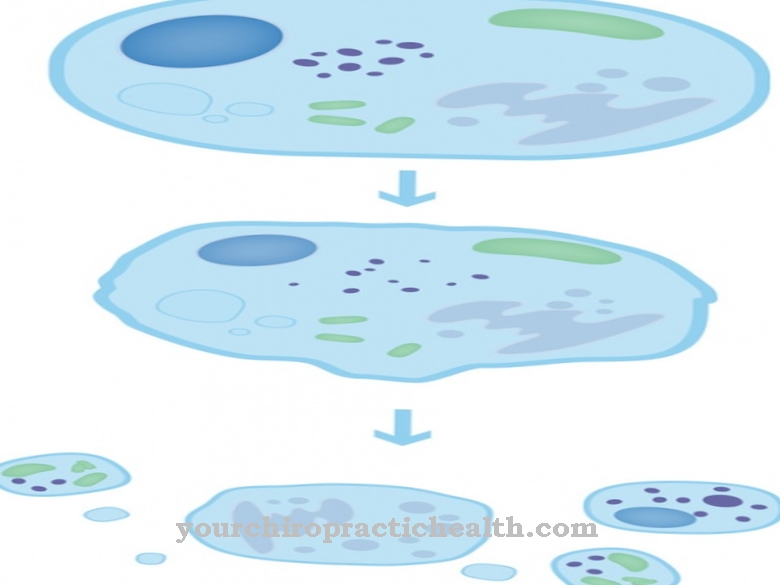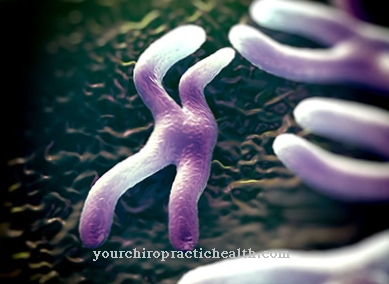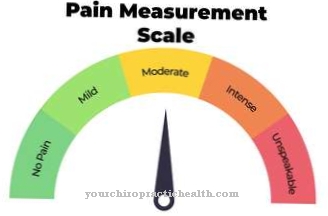The WAGR syndrome denotes the lack of a set of genes on the 11th chromosome. This disorder can lead to a number of conditions which can include tumors of the kidneys, cancer, eye diseases, genitourinary problems, intellectual disability, and more.
What is WAGR Syndrome?
The WAGR syndrome is a rare genetic disorder that can affect both girls and boys.Children born with WAGR syndrome often develop eye problems and are at higher risk of developing certain forms of cancer and intellectual disabilities.
The expression WAGR stands for the first letters of the most common physical and mental illnesses that can occur in those affected. These include Wilms Tumor ('W'), the most common type of kidney cancer in children. Also, aniridia ('A'), the complete absence of the colored part of the eye.
Urogenital problems are also often part of the clinical picture; In English "Genitourinary" ('G'): this is where the sexual organs are misaligned. And the last factor is mental retardation; in English "retardation" ('R'). Most people with WAGR syndrome have two or more of these symptoms.
causes
The cause of that WAGR syndrome lies in a genetic defect. This means that it is triggered by the lack of a certain genetic section on the 11th chromosome.
In most cases such a change occurs on the 11th chromosome during the formation of the sperm or the egg cell. However, development in the womb during the first few weeks is also possible.
The hereditary transmission of a switch between the chromosomes in one of the parents is less common. This leads to a loss of genes when the set of genes is passed on to the child. A mixture of chromosomes in the child that lacks the gene set and others that are complete is also possible.
Symptoms, ailments & signs
The genetically determined WAGR syndrome is characterized by the complex of symptoms consisting of Wilm's tumor, aniridia, malformations of the urogenital system and mental retardation. Not all symptoms have to appear at the same time. Aniridia (lack of the iris) is almost always present. It thus provides an important indication of the disease.
The lack of the iris can later lead to cataracts (cataracts) and other eye diseases. In rare exceptional cases, however, aniridia is not present. Glaucoma (glaucoma) is also sometimes seen. Some people also notice drooping eyelids (ptosis). Wilm's tumor is the most common kidney tumor in childhood.
It occurs in around half of all patients with WAGR syndrome. Furthermore, up to 40 percent of patients over the age of twelve suffer from kidney weakness. The genitourinary system is noticeable by abnormalities that manifest themselves in the form of intersexual genitals up to undescended testicles. These abnormalities are particularly common in men. They can also be absent in women.
However, women sometimes have a gonadoblastoma (tumor of the ovaries). The vagina and uterus may be deformed. The mental deficit is different in the individual patients. Some patients also develop extreme obesity in childhood. A cure for WAGR syndrome is not possible. Lifelong symptomatic therapy including regular monitoring of the kidneys for tumors and functional impairments must take place. Malformations and tumors must be removed surgically.
Diagnosis & course
Symptoms Related to the WAGR syndrome are usually recognized immediately after birth. A genetic test can then be carried out. One of the most noticeable signs is the lack of eye color in one or both eyes.
The genetic test is called a chromosome analysis or a karyotype. This analysis searches specifically for the said set of genes on the 11th chromosome. An even more specific test is called FISH for short (fluorescent in situ hybridization) and can search for individual genes. For people or couples who have previously had a child with WAGR syndrome and thus belong to the risk group, there are options to carry out tests for diagnosis much earlier.
It is not certain which of the eponymous diseases the affected child will suffer. Also, there are people with WAGR syndrome who do not show any of the main symptoms.
Complications
The WAGR syndrome leads to a number of different complaints and diseases and can therefore also significantly reduce the quality of life of the person affected. Patients with this syndrome usually suffer from intellectual disabilities and various eye complaints. This results in a missing iris in the eye, so that the eyesight of the person affected is significantly reduced.
The rest of the body also has deformities and anomalies that can make everyday life much more difficult for the patient. Many children suffer from bullying or teasing as a result of the WAGR syndrome and can therefore also suffer from psychological complaints or depression. The parents or relatives of the patient often suffer from severe psychological disorders. Furthermore, the WAGR syndrome leads to cataracts and often also to a complete loss of vision in the patient.
Since WAGR syndrome also significantly increases the likelihood of various types of cancer, those affected depend on various treatments and regular examinations. There are no complications. However, a complete cure for this syndrome cannot be achieved. Due to the mental handicap, patients are always dependent on the help of other people in their lives and cannot cope with everyday life on their own.
When should you go to the doctor?
Since the WAGR syndrome cannot heal itself, the person affected should always consult a doctor. The earlier a doctor is consulted, the better the further course of the disease is usually also. If you want to have children, genetic testing and counseling can also be carried out to prevent WAGR syndrome from occurring again.
In the case of WAGR syndrome, a doctor should be consulted if the person concerned suffers from a missing iris. This discomfort is usually visible to the naked eye. Furthermore, various eye complaints can indicate this disease if they occur permanently and do not go away on their own. Tumors of the eyes also often indicate this syndrome. Most of those affected also suffer from reduced intelligence and also from severe obesity, which can already occur in children.
Likewise, sexual complaints often point to this disease when they appear in connection with the other complaints. In the case of WAGR syndrome, a general practitioner or a pediatrician can primarily be consulted, who can diagnose the syndrome. Further treatment then depends on the exact complaints and their severity.
Treatment & Therapy
Treatment of the WAGR syndrome is individually dependent on the diseases and disorders that the child develops through the defect. Around half of all children with WAGR syndrome develop Wilms' tumor between the ages of one and three, but it can occur up to the age of eight, and in very rare cases later.
To ensure timely treatment, the child is examined with ultrasound every three months up to the age of eight in order to detect the tumor at an early stage. Aniridia can be treated with medication as well as surgery and is aimed at preserving the child's eyesight. To prevent urogenital problems, regular lumbar examinations are also performed, both in boys and girls.
Testicles and ovaries are at risk of developing cancer and may need to be removed. If this is the case, hormone therapy is prescribed. The mental impairment of children can vary from mild to severe, but in some cases their intelligence remains perfectly normal.
prevention
Since that WAGR syndrome is a genetic defect, there is no cure or direct prevention. Genetic advice from a specialist can help couples who want to have children in assessing the risks. Even if a pregnancy has already occurred, information can be used to help you decide whether a child with WAGR syndrome will be carried to term.
Aftercare
Since the disease is a heavy burden for those affected in everyday life, permanent psychological counseling should be considered. The social environment should be looked after so that those affected can always ask family members for help. In order to be able to live with the disease in the long term, it is important that emotional stability is guaranteed.
Small joys of life are very important in order to make life with the disease easier for those affected. Activities that were previously fun for those affected should be planned and carried out again with the social environment. Sufferers should avoid any stressful situation. It is also advisable to visit a self-help group. There, those affected can exchange ideas with other sick people and get to know new ways of living with the disease.
In addition, those affected do not feel left alone with the disease. Those affected should adapt their way of life to the disease as much as possible. The job that is practiced should also be compatible with the illness. Those affected should not under any circumstances overexert themselves physically or mentally.
Those affected should also get sufficient information from their doctor about the disease and inform themselves independently. So every situation of the disease can be dealt with appropriately. Relatives should also be sufficiently informed in order to be able to deal appropriately with those affected.
You can do that yourself
Dealing with this disease is a considerable challenge for the person affected and their relatives. In everyday life, support and cooperation with a psychotherapist should be sought.
There are numerous complaints that are often difficult to deal with. In order to reduce situations of emotional overload to a minimum, cognitive stability is extremely important. Self-confidence is to be strengthened and should be built up daily through small successes. Humor and joie de vivre are two important components in everyday life. They support further development and have a positive influence in coping with everyday challenges. The way of life should be adapted to the possibilities of the person concerned. Situations of physical overexertion or mental overexertion are to be avoided as a matter of principle.
In addition, comprehensive information about the disease and all possible complaints is extremely important. The responsibility for the current state of information lies not only with the treating doctor, but also with the person concerned or their relatives. Doing your own research helps to expand your own knowledge. Knowing about what is going to happen further helps to cope with sudden developments and ensures more sovereignty in these cases. In this way, situations of fear or panic can be better managed.


.jpg)
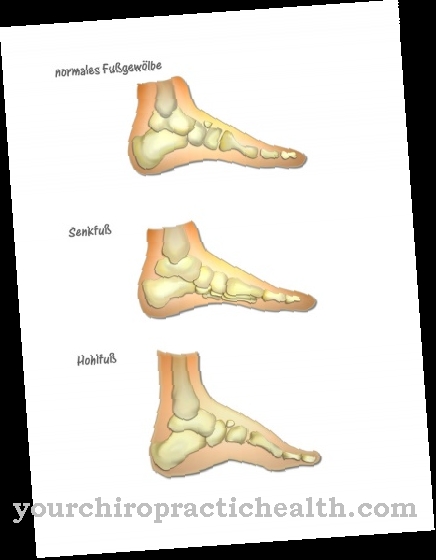


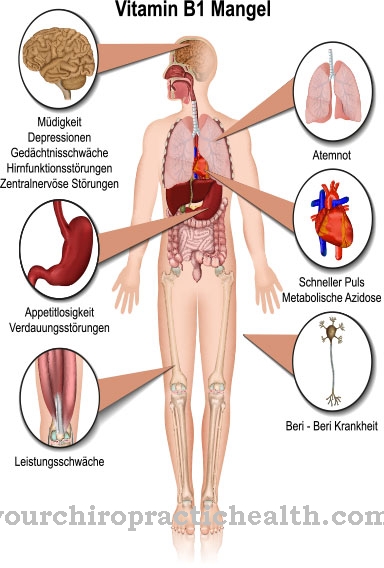





.jpg)



